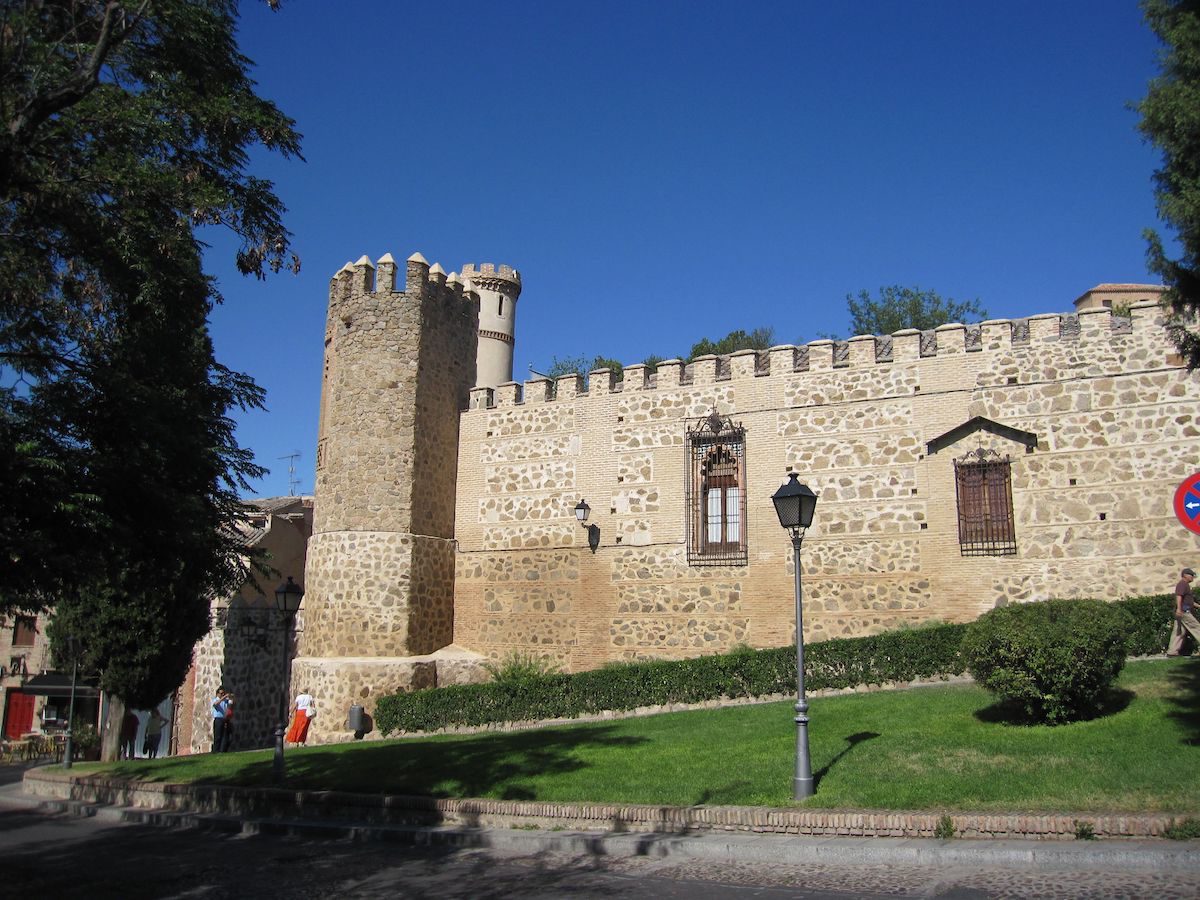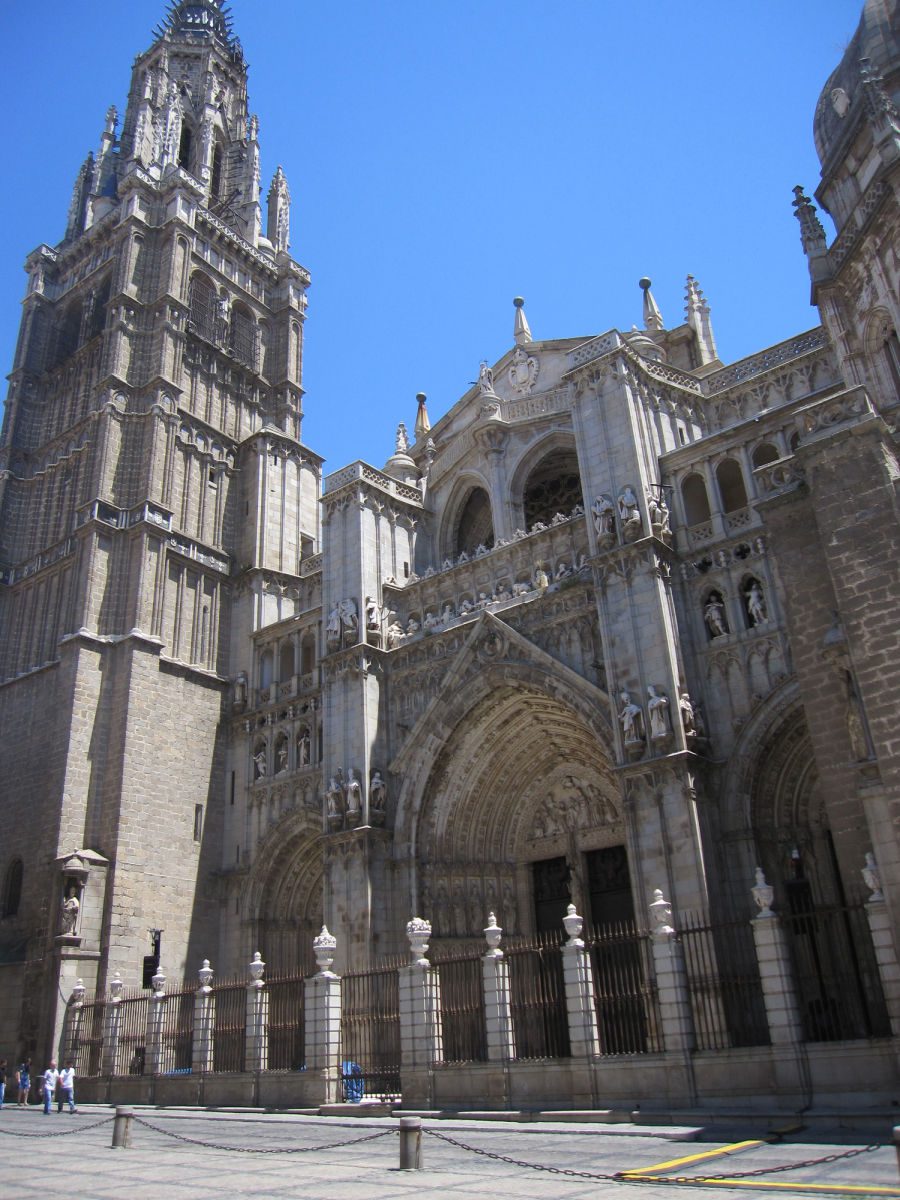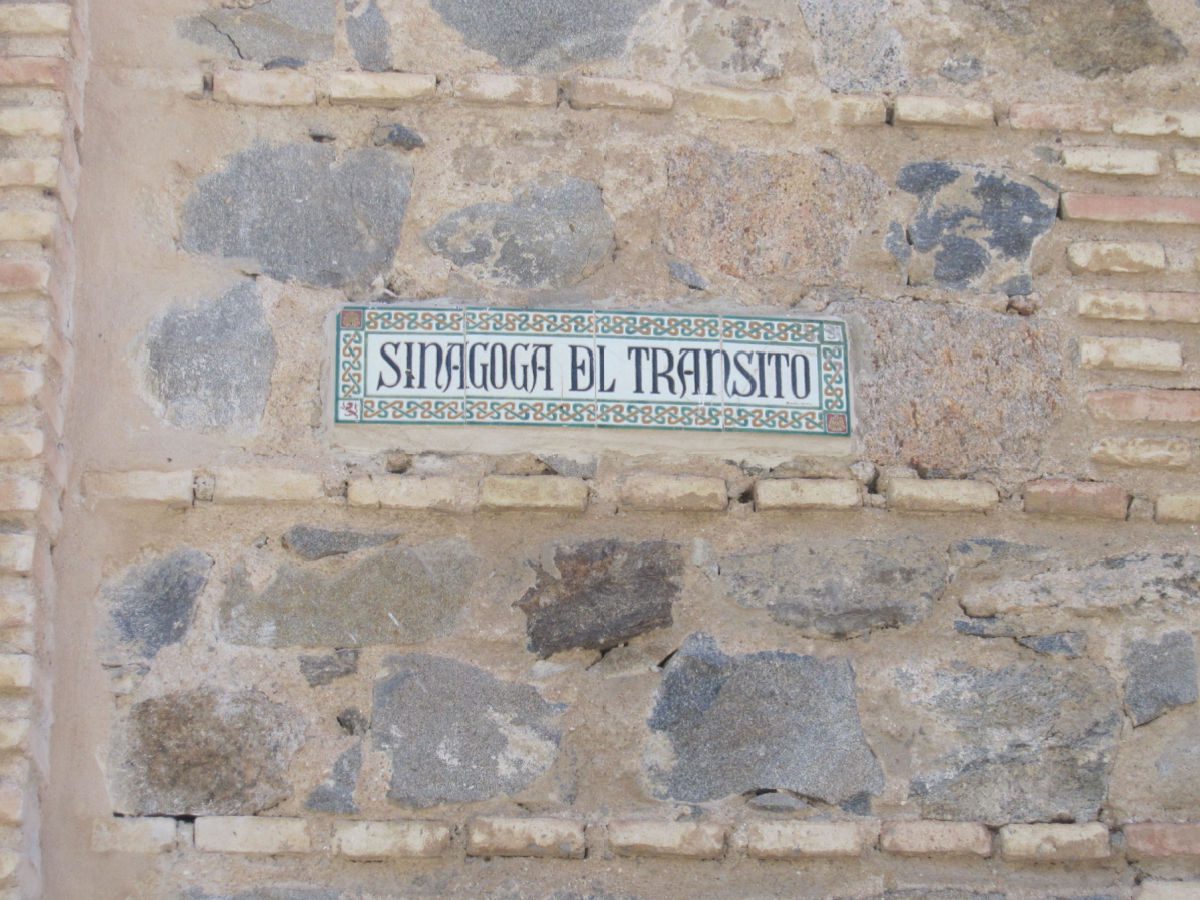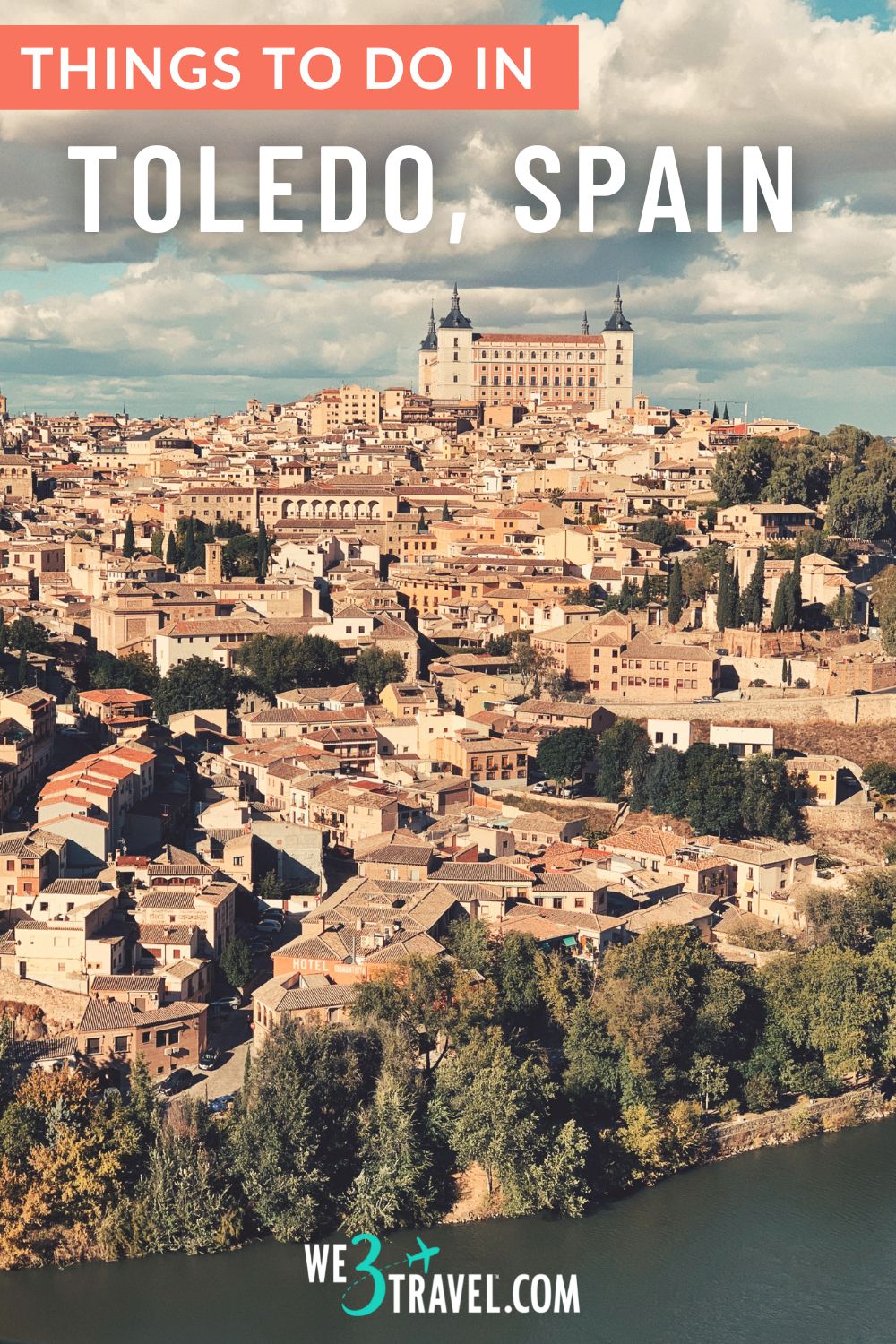Toledo is one of the most fascinating cities in Spain, with a unique blend of Spanish, Muslim, and Jewish culture. The historic medieval city center has been preserved and recognized as a UNESCO World Heritage Site. Once the capital of Spain, the city is perched on a hill surrounded on three sides by the Tagus River. With this rich history and culture, it won’t surprise you that many visitors take a Madrid to Toledo day trip.
During our two weeks in Spain, we spent five days in Madrid, giving us enough time to take a day trip to Toledo. While I’d still rank Segovia above Toledo because of its quieter charm, I’m very glad we had a chance to take a Toledo day trip. In fact, one of my favorite experiences on our trip to Spain happened in Toledo.
Getting to Toledo from Madrid

Toledo is located in central Spain, approximately 70 km south of Madrid. Many people will take a Madrid to Toledo day trip, but you can also visit Toledo as part of a guided tour, or stop in Toledo on your way to Cordoba or Seville. There are several ways to get to Toledo from Madrid, including by train, bus, and car.
Train
The quickest and most convenient way to get to Toledo from Madrid is by train. The Renfe train from Madrid to Toledo departs from Madrid’s Puerta de Atocha train station (keep in mind that this is a different station than the train to Segovia.) The journey takes approximately 32 minutes and there are several trains departing throughout the day.
Just like our day trip to Segovia, we found the train ride very pleasant, easy, and comfortable. Once you arrive in Toledo, you will need to walk uphill to get to the city center, or you could take a short taxi ride.
Bus
Another option to get to Toledo from Madrid is by bus. The bus ride takes approximately 1 hour and there are several bus companies operating this route, including ALSA. The bus station in Madrid is located near the city center and the bus arrives in Toledo at the bus station located just outside the historic city center. It is certainly cheaper than the train, but given the time difference, I think it is worth paying a little extra to take the train.
That said, I had a travel planning error and we ended up missing our return train and the next train was fully booked so we took the bus instead and it was much nicer than I thought it would be.
Car
Driving to Toledo from Madrid is also an option and takes approximately 1 hour. The city can be reached via the A-42 highway and there are several parking options available once you arrive in Toledo. The best option for parking is the underground parking lot located just outside the historic city center.
Getting Around Toledo
Whether by bus or cab, your approach to Toledo will provide a great view of the walled city and the Alcazar towering over the town. Once you arrive in Toledo, the best way to get around the city is on foot as the historic city center is quite compact. There are also taxis and local buses available for those who prefer not to walk. Additionally, there are several bike rental options available for those who wish to explore the city on two wheels.
Things to do in Toledo on a Day Trip from Madrid
Note: This post may contain affiliate links. If you click a link and make a purchase, I may receive a small commission. All opinions are my own.
There is a lot to see in Toledo, but if you only have a day trip, you will want to prioritize based on your interests. Even one day is plenty to get hit the highlights. If you plan on visiting quite a few attractions and churches in Toledo, you may want to look into getting the tourist wristband that gets you into multiple attractions.
Also, if you want to learn more about the city’s history and culture, I would recommend booking a half-day walking tour and then explore more on your own.
See the Alcazar

The first thing you will see when you get to town is the Alcazar, as it towers over the city. The Alcazar was originally built in the 6th century as a palace for the Visigothic kings and was later used as a military fortress. During the Middle Ages, it played a significant role in the defense of the city and was used by various Spanish rulers, including King Alfonso VI, King Henry III, and King Alfonso X.
Today, the Alcazar is a museum dedicated to the military history of Spain. Some of the highlights of the museum include the impressive collection of weapons and armaments, as well as the exhibits on the history of the Spanish army and its various campaigns.
Our first stop in town was the Alcazar, although I would advise that if you aren’t interested in military history or weapons, you can skip going to the museum. While fascinating for the war or weapons buff, even little sword fighters will get bored after a while. I was disappointed that you didn’t get to see much of the original architecture from the inside.
If you do enjoy military history and seeing suits of armor and swords (Toledo is famous for its sword making), plan on spending about two hours to fully explore the museum and its exhibits. Just keep in mind that there is a steep hill to climb to reach the Alcazar, so comfortable shoes are recommended.
Additionally, you may want to bring a jacket or light sweater, as the interior of the museum can be cool and damp. Be sure to check opening days and times before you visit and arrive early to avoid long entrance lines.
Plaza de Zocodover
From the Alcazar, it is a short walk to the cathedral. On your way, you will pass through the Plaza de Zocodover (Zocodover Square), which is a great spot to grab a coffee at a sidewalk cafe. This is the main square in Toledo, set on the site of an ancient Arabian Market. Today, there are still weekly markets that take place in the square.
Toledo Cathedral

Your next stop is the Cathedral, which is claimed as one of Spain’s finest. It is certainly a magnificent example of Gothic architecture and one of the most important religious buildings in Spain. It is the second largest Cathedral in Spain after Seville, and while it is enormous and the architecture is awe-inspiring, I found the dark, Gothic atmosphere downright fear-inspiring. Certainly nothing like the light-filled Sagrada Familia in Barcelona.
The Cathedral was built in the 13th century by King Ferdinand III on the site of a former mosque and was consecrated as a cathedral in 1227. It continued to expand over the course of several centuries, and its architectural style reflects the changing tastes and styles of the times, incorporating elements of Gothic, Renaissance, and Mudéjar styles.
One of the most notable features of the Toledo Cathedral is its stained-glass windows, which are considered to be among the finest in the world. The cathedral also boasts an impressive collection of artwork, including sculptures, altarpieces, and frescoes, many of which were created by some of the most important artists of the Renaissance and Baroque periods, including Goya and El Greco.
The exterior of the cathedral is equally impressive, with its imposing towers and ornate stonework. Inside you will find soaring vaults, intricate carvings, and richly decorated chapels. Highlights include the Chapel of the Holy Sacrament, the altar of Saint John, the choir stalls, and the Museum of the Cathedral, which houses a collection of art and artifacts related to the cathedral and its history.
Just keep in mind that, as with most churches in Europe, visitors must adhere to a dress code with shoulders and knees covered (not always easy in the heat of a Spanish summer.).
Explore the Streets and go Shopping
It is definitely easy to get lost in Toledo, with so many winding streets and alleyways. Luckily, the city itself isn’t that big so if you hit a wall (literally), just turn around and go back the other way. It is fun to wander for a bit and get off the well-beaten tourist track.
Toledo is famous for many handicrafts, but most famously it is known for sword making, marzipan, and damascene jewelry. You will also see many statues and souvenirs featuring Don Quixote, since Cervantes set his novel in the small town of El Toboso, in the province of Toledo. Just keep in mind that many shops and restaurants will close in the afternoon for a couple of hours for siesta so plan your day accordingly.
After wandering a bit in the heat, we found a small cafe for some lunch. By the time we finished, almost everything was closed for siesta and we were left hot and sweaty in the broiling heat.
Luckily, we stumbled upon a damascene artisan hard at work and he gladly let us into his shop to browse. Damascene is the art of decorating non-precious metals with gold threads. While it has its roots in the Middle Ages, the capital for damascene jewelry is in Toledo.
Since we hadn’t purchased many souvenirs and I especially like hand-crafted items, I was intrigued. This encounter with the gentleman artisan was one of the most special experiences of our entire trip. While he didn’t speak much English, between his English and our Spanish we were able to get by. I picked out a beautiful necklace of silver against turquoise, and we searched for something small for my daughter.
The shop owner was so taken with our daughter that he wrapped up a beautiful pair of earrings for her as a gift. When his daughter came to oversee the transaction, he felt guilty about quoting us the wrong price and also snuck a necklace for our daughter behind his daughter’s back. I felt guilty taking it but he gave with such joy it was so touching. If you are in Toledo, I strongly recommend visiting the Artesania at Taller del Moro, 7!
Visit the Jewish Quarter And the El Greco Museum

After shopping for a while, siesta was over and we headed down to the old Jewish Quarter to visit the Museo del Greco. This is the best museum dedicated to a single artist that I have ever been to. I liked it much more than the Picasso Museum in Barcelona.
The museum claims to be based in the house in which El Greco was born. Although this is disputed, it is at least similar to a house in style and location where he was born and provides great insight not just into his work but into what a 15th century dwelling would look like. The most fascinating exhibit however is a multimedia presentation which really explains his technique and teaches you to look at his work with new appreciation. Even the youngest budding artists will enjoy this presentation.
After the museum, we finally got to see some real evidence of the Jewish history in Spain with a visit to the Singoga del Transito and the Sephardic Museum. The synagogue was interesting, with the Sephardic influences shown heavily in the arches and the women’s gallery. Outside the museum was a nice courtyard to stop and relax for a while on a hot today. Altogether, the visit only took about 30 minutes.
Sadly, that is all we had time to do during our day trip to Toledo from Madrid. If you stay longer, you may want to check out the Monastery of San Juan de los Reyes, walk across the Puente de San Martín and the Puente de Alcántara bridges, and take in the view from the Mirador del Valle (about 30 minutes walk from the train station but it is best to go in the morning if you want to take pictures.)
Where to Stay in Toledo
If you have time and want to stay overnight, or you are visiting on a day trip on your way to Cordoba, there are many affordable options in and around Toledo.
Visiting Spain? Read more:
- Fun things to do in Madrid with kids
- 4 Days in Barcelona with kids
- Fun things to do in Seville with kids
- Day trip to Segovia from Madrid
PIN THIS FOR LATER


Tamara Gruber is the Founder and Publisher of We3Travel. A former marketing executive and travel advisor, Tamara is an award-winning travel writer and recognized expert in family travel. Tamara is a member of SATW and the Adventure Travel Trade Association, and serves on the Board of the Family Travel Association. She is also the publisher of YourTimetoFly.com and the co-host of the Vacation Mavens travel podcast.


